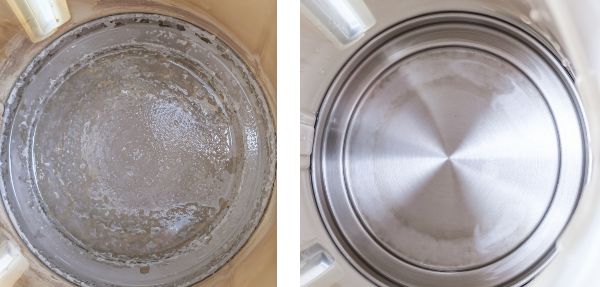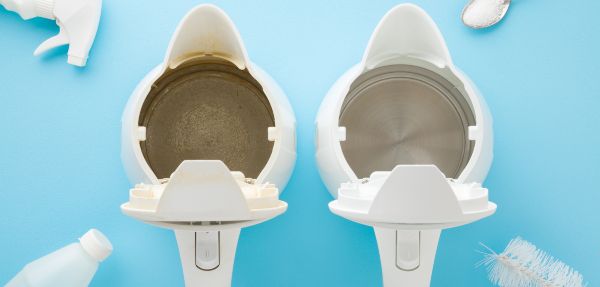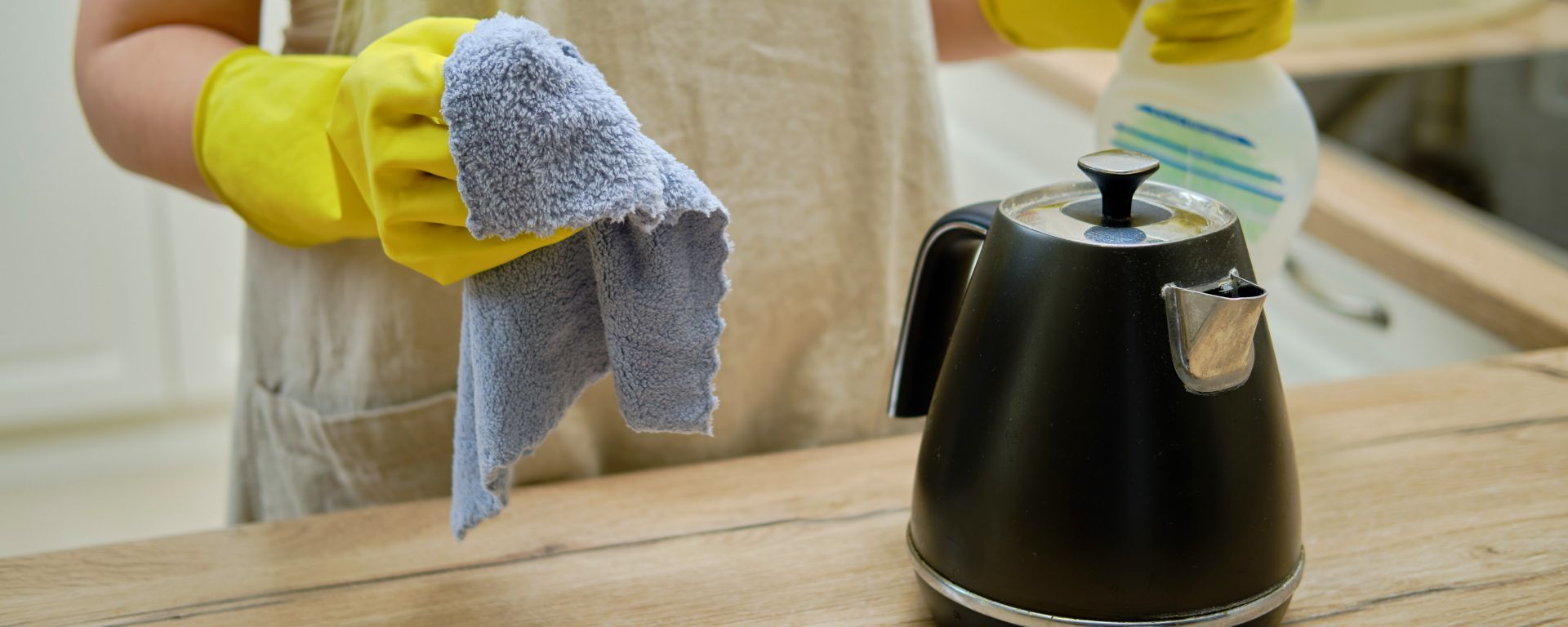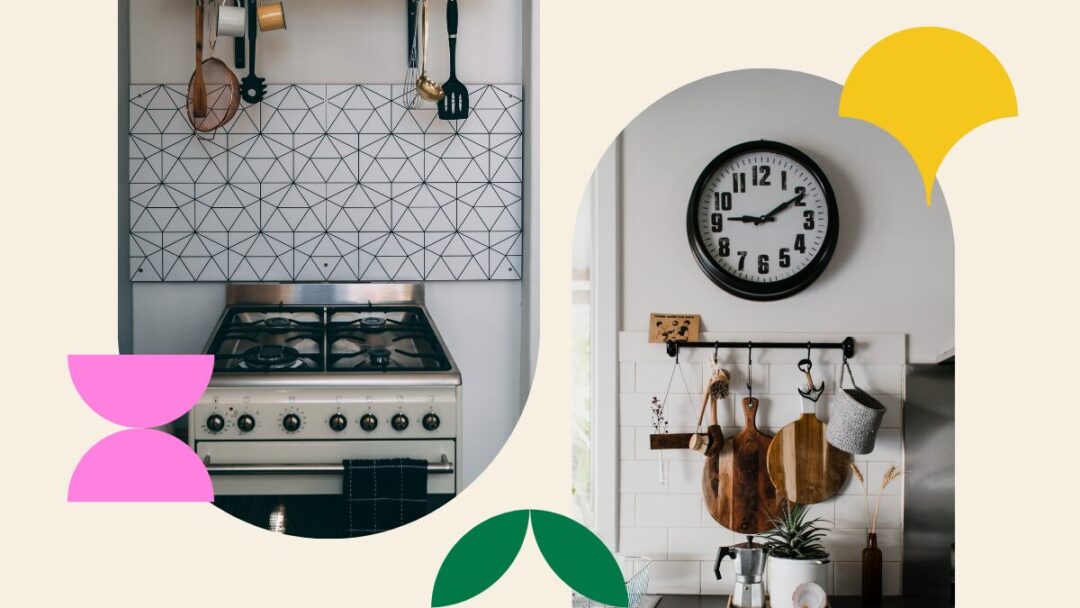Electric kettles are great for the kitchen, especially for quickly-boiled water for tea, coffee, or even pasta. Not only do they boil fast, but they also look great on your counter while doing so. Although these kettles are way better than having to heat up a pot on the stove, they do need some cleaning from time to time.
As time goes on, electric kettles start to build up with mould or mineral build-up from the water. If you live in an area that has hard water, then it’s more likely that build-up will occur. Also, the outside of the kettle can become dirty after time from the grime that sits on your countertops. We have created this article to explain how to clean your electric kettle and get rid of build-up, for fresh cups of tea and coffee.
Just as with cleaning your washing machine or cleaning your oven, these efforts are to keep them working efficiently for years to come.
What Makes A Kettle Dirty

Water from your tap contains minerals, and when water is boiled, some of these minerals are left behind and end up at the bottom of the kettle. The water in areas with hard water contains more minerals. Over time, the scales or furring will leave a build-up on the heating elements of the kettle, and won’t allow for efficient use of it anymore.
How Often Should I Clean An Electric Kettle?
To ensure your hot beverages always taste great, it’s important to make sure that you make a habit out of cleaning your electric kettle. The kettle should be cleaned once a month if used daily.
Descaling is the process of getting rid of limescale build-up inside your kettle. Limescale comes from calcium, magnesium, and other various minerals that are contained in your water. If your home has hard water, then it’s good to descale your kettle more often as hard water has more minerals than soft water. Mineral build-up in your kettle can change the taste of your favourite hot beverages.

How To Clean A Kettle With Vinegar?
Vinegar is a useful and powerful cleaning agent for the household. Its acidity makes it perfect for breaking down buildup in your electric kettle. Vinegar is safe to use all over your home, and it’s also easily accessible for cleaning and descaling.
- For daily cleaning of the kettle’s exterior, use a damp cloth to get rid of water marks or residue, and don’t forget to finish by drying with another cloth and polishing with a soft cloth. If your kettle or appliances in the kitchen are stainless steel, you may want to read about how to clean stainless steel.
- For the interior of your electric kettle all you need is a cup of white vinegar. Use the following 3 steps:
- Fill up your kettle with 1 part vinegar and 3 parts water.
- Boil the kettle and allow the mixture to sit overnight before pouring out the solution.
- After pouring the mixture out, fill the kettle with water and bring it to a boil again, followed by draining. This should be repeated twice to remove any leftover odour or taste from the vinegar. After this, your kettle should be ready to be used again.
Can Vinegar Damage An Electric Kettle?
Cleaning with white vinegar is safe and effective for descaling and cleaning your electric kettle. The mild acidity in white vinegar helps with breaking down mineral build up. But you should still check in your manufacturer’s manual for care and cleaning instructions.
Cleaning With Lemon Or Citric Acid
Both lemon juice and citric acid are great cleaning agents. The acid acts as a natural bleach and antiseptic, and the smell of lemon brings a refreshing aroma to the kitchen. Use these 3 cleaning steps when learning how to clean a kettle with lemon or citric acid:
- Add a tablespoon of citric acid powder or lemon juice to your kettle.
- Add enough water to cover the base and switch on the kettle to boil.
- Once the water has boiled, you can pour out the remaining water and rinse the inside of the kettle thoroughly with water, then dry the interior.
Cleaning Your Electric Kettle With Bicarbonate Of Soda
Baking soda is another effective cleaner, perfect for your kettle. Follow these 3 steps when figuring out how to clean a kettle with bicarbonate of soda:
- Add 1 to 2 tablespoons of baking soda to your kettle, fill it with water, and bring to a boil.
- Once the kettle has boiled, leave it to sit for at least 10 minutes.
- Next, gently scrub the inside of the kettle with a non-abrasive brush. Be sure to wait until the kettle has cooled down to handle, then rinse with clean water, followed by drying with a tea towel.

Conclusion
An electric kettle gives you the convenience for various recipes that require boiling water. They are easy to use, stylish, and compact for the kitchen countertop. The removable base means that it can be moved to anywhere you need it while the stainless steel material matches almost any décor.








